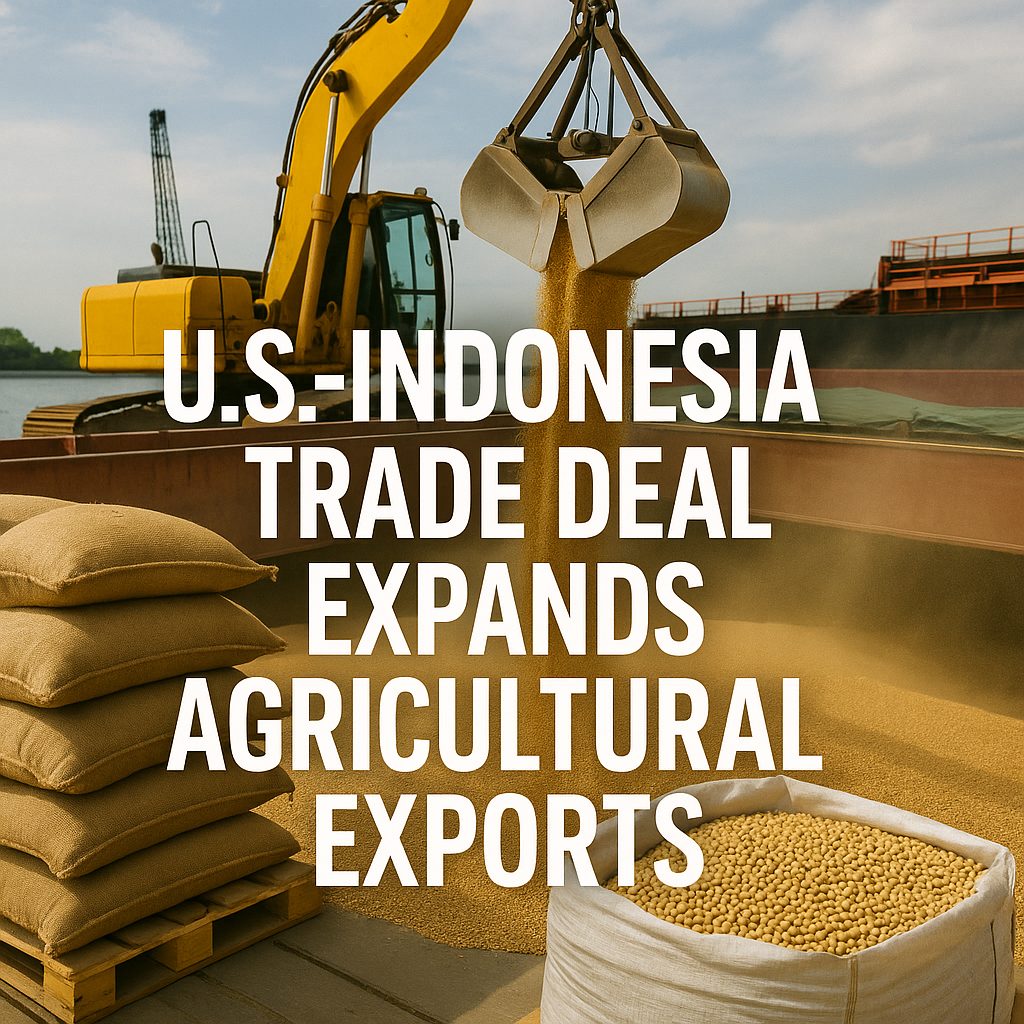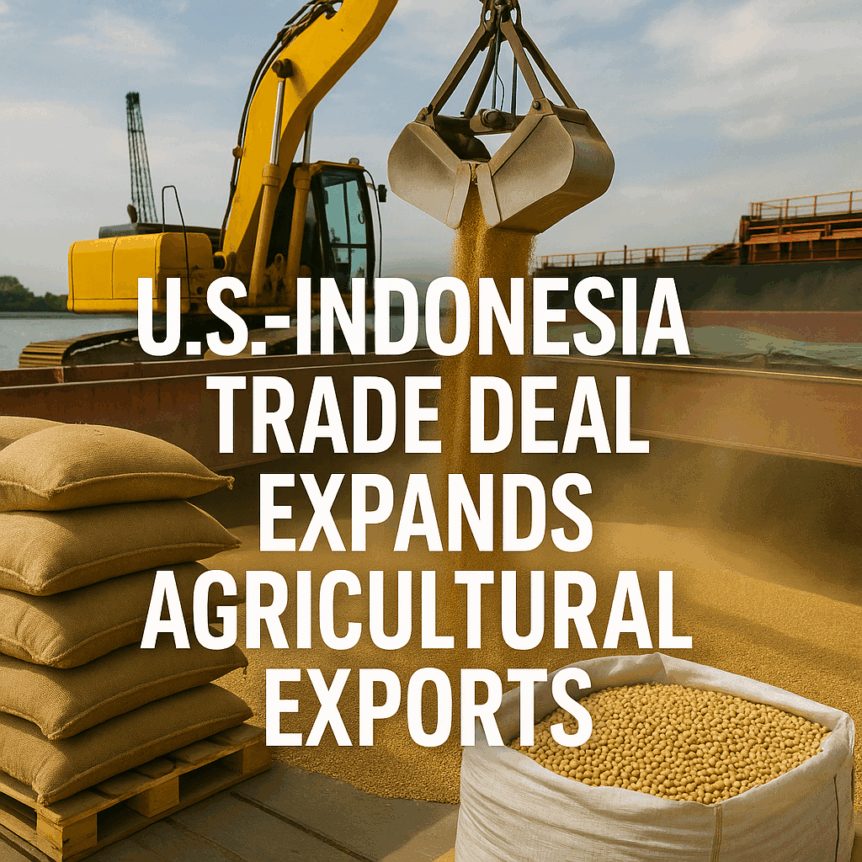New U.S.-Indonesia Trade Agreement Opens Doors for American Agriculture

President Donald Trump has announced a sweeping trade agreement with Indonesia, marking a major milestone in strengthening economic ties between the two nations. The deal includes significant provisions for U.S. agriculture, energy, and food processing industries, creating expanded opportunities for American producers and exporters.
Lower Tariffs and Increased Market Access
A key component of the agreement is Indonesia’s decision to reduce tariffs on select U.S. goods from 32% to 19%. This substantial cut is expected to make American products more competitive in the Indonesian market, increasing trade volumes and supporting growth in U.S. exports.
$15 Billion in U.S. Energy Commitments
Beyond agriculture, the deal secures $15 billion in U.S. energy exports to Indonesia. With its rapidly developing economy, Indonesia is seeking dependable energy sources—and American companies are well-positioned to meet that demand. U.S. exports of oil, liquefied natural gas (LNG), and fuel products are set to rise, benefitting domestic producers and the broader energy sector.
$4.5 Billion in Agricultural Exports
The agreement also includes $4.5 billion in American agricultural exports, a boost to farmers and food producers across the U.S. A highlight of the pact is a commitment by the Indonesian Wheat Flour Mills Association to purchase $1.25 billion of U.S. wheat annually from 2026 to 2030. This long-term purchase plan provides valuable stability to U.S. wheat growers facing fluctuating global demand.
Major Players and Future Growth
Industry leaders on both sides are expected to play active roles in implementing the agreement. Indonesian companies such as Indofood and U.S. agribusiness giants like Cargill and Archer Daniels Midland (ADM) are likely to benefit directly. While exact figures haven’t been disclosed, soybean, corn, and cotton exports are also expected to grow under the new trade framework.
Strengthening Bilateral Trade Relations
This trade deal reflects a broader effort to deepen U.S.-Indonesia economic cooperation, build long-term trade resilience, and expand markets for critical American industries. As implementation moves forward, stakeholders across agriculture and energy are watching closely for new export channels and investment opportunities.










